Hokkaido Before the Japanese: The History and Culture of the Ainu
 Unknown Sides of Japan: The Ainu Saga
Unknown Sides of Japan: The Ainu Saga
Japan, a country globally renowned for its intricate culture, traditions, and modernity, harbors many enigmatic facets. Among them is the history of the Ainu people. The indigenous inhabitants of Hokkaido, the Ainu, have experienced a complex journey in their relations with the rest of the archipelago over the centuries. At various historical junctures, they were appreciated for their distinctiveness; however, more often, they encountered marginalization and even discrimination from the dominant Japanese culture. In eras when their culture and traditions were deemed "less developed," they faced detachment, leading to their gradual assimilation and cultural distinction loss. Over time, with social and cultural evolution, the Ainu began receiving increased recognition, emerging as an integral part of Japan's heritage.
 The Origins of the Ainu: Secrets from Excavations and Chronicles
The Origins of the Ainu: Secrets from Excavations and Chronicles
The history of the Ainu, the indigenous residents of Hokkaido, has long been a subject of research and fascination for many archaeologists and historians. Among the most notable figures in this realm is Dr. Yoshiki Yamaguchi, who has devoted years to studying areas once inhabited by the Ainu.
The earliest archaeological traces of Ainu culture date back to the Jomon period (around 14,000 - 300 BCE). In Hamakita, in the Shizuoka prefecture, tools and pottery distinctive to this people were discovered. These artifacts reveal that the Jomon culture, which the Ainu are often associated with, was rich in ornamentation and had advanced tool production techniques.
Furthermore, extensive archaeological research has been conducted in Nibutani in Hokkaido, a significant center for Ainu culture. Settlement remains found there and the DNA analysis of human remains suggest that the settlement's inhabitants were direct ancestors of modern Ainu.
Moreover, in Japanese chronicles like the "Nihon Shoki" from 720 CE, mentions can be found of a people called "Emishi" or "Ezo" living in northern Japan, who might have been the Ainu's forebears. These chronicles detail confrontations and conflicts between the Emishi and the early Japanese state.
 The Ainu Language and Its Potential Influence on Japanese
The Ainu Language and Its Potential Influence on Japanese
The Ainu language, a heritage of the indigenous inhabitants of Hokkaido, has long been a subject of interest for linguists. Dr. Hiroshi Nakagawa, a leading figure in Japanese linguistics, dedicated a significant portion of his academic career to exploring the relationship between the Ainu and Japanese languages.
While the Ainu language is a linguistic isolate, meaning it has no proven ties with other languages, Dr. Nakagawa highlighted numerous phonetic and lexical similarities between the two languages. For instance, certain grammatical structures and sounds used in the Ainu find counterparts in Japanese, suggesting potential influence or a shared root.
Moreover, phonological analyses revealed some sounds present in the Ainu language, rare in a global context, also appear in Japanese. One example is the aspirated "p" sound typical of Ainu, reflected in some regional Japanese dialects. Another intriguing sound is "č", akin to "ch" in Japanese. These unique phonological parallels have been the subject of extensive debates and analyses in the academic realm, highlighting potential ties between the two languages.
Furthermore, lexical studies have identified words in Japanese tracing back to Ainu origins. For instance, the word "kotan," meaning "settlement" or "village" in Ainu, mirrors some place names in Hokkaido. While debates continue over the extent of Ainu's influence on Japanese, research like Dr. Nakagawa's offers insights into Japan's cultural complexity and richness. These studies not only emphasize the importance of preserving the Ainu language but also show how cultures can interplay over centuries.
Daily Life of the Ainu: Traditions and Customs of the Indigenous Inhabitants of Hokkaido
For the Ainu, hunting and fishing were vital sources of sustenance. Located near the rivers and forests of Hokkaido, this community became expert hunters and fishermen. They primarily specialized in hunting bears, deer, and other large animals. Fish, especially salmon, were an important food source, often dried for the winter.
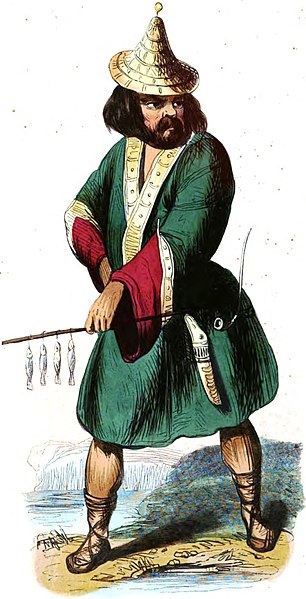
Ainu households, called "chise," had a distinctive design: rectangular wooden huts roofed with grass. Inside was a central hearth, providing warmth and light and serving for cooking.
Ainu clothing was mainly made from plant fiber or animal hides. Women were tasked with decorating the clothes with traditional embroidery, narrating stories of their culture. Both men and women often wore decorative earrings, necklaces, and bracelets.
The Ainu day began and ended with a series of rituals aimed at spirits they believed inhabited everything around them. Before meals, for instance, they made offerings to the spirits, expressing gratitude for the food and requesting good hunts in the future.
In the Ainu community, tattooing was an important rite of passage for women, marking their coming of age. The tattooing started in adolescence and continued throughout a woman's life, with new designs added as she aged. For men, proficiency in hunting and fishing determined their community status, and their courage and skills in these areas were often celebrated in songs and stories.
Religion and Spirituality of the Ainu: Beliefs of the Indigenous Inhabitants of Hokkaido
For the Ainu, spirituality deeply intertwined with daily life. They believed in spirits, called "kamuy," present in everything, from animals and plants to natural elements like water and fire. Their daily life was filled with prayers, offerings, and rituals to gain favor from these spirits.
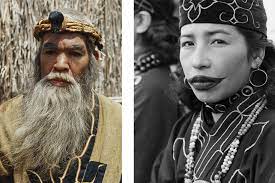
Each aspect of the natural world had its spirit or guardian deity in Ainu beliefs. "Kamuy Fuchi," the spirit of fire, was one of the most significant and was seen as the protector of the household. Other vital deities included "Shiramba Kamuy" (spirit of mountains) and "Repun Kamuy" (spirit of the sea). All these spirits had both positive and negative aspects, and harmonious coexistence with them was key to prosperity and happiness.
In the Ainu community, there were individuals with special abilities to communicate with spirits - shamans, called "inau." They played a crucial role in interpreting the will of the spirits, conducting ceremonies, and healing the sick. Their knowledge was passed down from generation to generation.
Many elements of daily Ainu life, like clothing, jewelry, or everyday objects, were adorned with symbols with spiritual significance. These designs were not just decorative but aimed to attract positive energy and protect against evil spirits.
Under the influence of Japanese expansion into Hokkaido and the imposition of mainstream culture, many traditional Ainu beliefs and practices began to fade. However, in recent decades, there's been a revival of interest in Ainu culture and spirituality among both Ainu and the broader Japanese community.
Ainu Art and Craftsmanship as Evidence of Connection with Nature
Ainu art reflected their deep connection with nature and spirituality. Many of their works were adorned with animal motifs, like bears, deer, and birds. These symbols were not just aesthetic; they held profound spiritual meaning. Their craftsmanship primarily focused on weaving, using plant fibers and animal hides, and carving intricate figurines and vessels.
For the Ainu, tattoos held diverse and significant meanings. For women, tattooing started in adolescence, symbolizing maturity. The designs evolved and became more intricate as the woman aged. Each design had specific significance, narrating a story or offering protection against evil spirits. For men, tattoos often related to achievements in hunting or fishing.
Music was an essential part of Ainu culture, reflecting their histories, beliefs, and daily experiences. Among traditional instruments, the most notable were "mukkuri," similar to a mouth harp, and "tonkori," a stringed instrument played during singing and dancing. These instruments weren't just for entertainment but also held ceremonial importance.
Ainu Interactions with Neighboring Nations: Coexistence and Exchange
While the Ainu were the indigenous inhabitants of Hokkaido, they did not live in isolation. They had ancient contacts with the Japanese from the main islands of the archipelago and continental Asian nations like the Koreans and Siberian populations. These early interactions varied from peaceful trade engagements to armed conflicts. Particularly, ties with ancient Korea were strong, as archeological discoveries suggest exchanges of goods and culture.
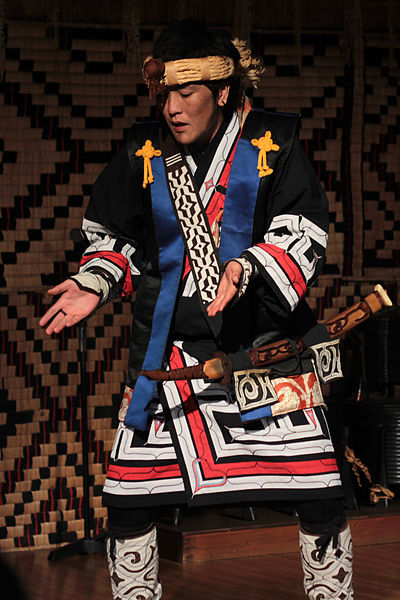
Interactions with the outside world profoundly influenced Ainu technological and cultural development. For instance, the introduction of metallurgy by the Japanese and Koreans significantly altered Ainu tools and weaponry. Cultural influences were also evident in art, music, and religion. Nevertheless, despite external influences, the Ainu retained their cultural identity, adapting and integrating foreign elements uniquely.
Ainu in Japan's Popular Culture: From Traditional Art to Modern Anime
Early Art and Poetry
From the Edo period, the Ainu were depicted in traditional ukiyo-e woodblock prints. The artist Hiroshige, in one of his woodblocks, portrays the Ainu as fishermen on the shores of Hokkaido. In poetry of this era, Ainu figures were often personified as the wild nature and unknown areas of Japan. Poems such as "Ainu no Uta" portray them as brave hunters and gatherers.
Film and Theater
In the silent film era, Ainu characters were featured in Japanese movies. For example, the 1930 film "Ainu no Yomeiri" tells a love story between a Japanese man and an Ainu woman. In Noh and Kabuki theater, plays were also based on Ainu legends and myths.
Video Games
Games like "Golden Sun" for the Game Boy Advance feature characters that have clear inspirations from Ainu culture, especially in terms of dress and tradition. Although they are not an exact representation, they indicate some influence of Ainu culture on game designers.
 Anime
Anime
Modern anime has also touched on the Ainu topic. "Golden Kamuy", an adaptation of a popular manga, tells the adventure of a Russo-Japanese war veteran and a young Ainu woman in search of treasure. Through this series, many aspects of Ainu culture are showcased, including language, traditions, and history.
Modern Literary Adaptations
In literature, authors such as Matsumoto Seichō often included Ainu characters, portraying them in a variety of situations, from social conflicts to deeply personal stories.
Ainu in Contemporary Music and Art
Contemporary artists, like Oki Kano, blend traditional Ainu music with modern genres, creating unique fusions. His works, using traditional Ainu instruments like the tonkori, reflect a desire to preserve cultural heritage in a modern context.
From Marginalization to Renaissance: The Evolution of Relationships between Japanese and Ainu
Once, especially during the Edo and Meiji periods, the Japanese treated the Ainu as "others" - culturally and socially. The assimilation policy of the Meiji era forced the Ainu to adopt the Japanese language, culture, and customs, leading to their marginalization and loss of cultural identity. For instance, they were prohibited from practicing their traditional religious rituals and wearing traditional clothing.
However, in the second half of the 20th century, advancing globalization and growing cultural awareness caused Japanese society to appreciate the uniqueness and value of Ainu culture more. An example is the introduction of the Ainu Culture Promotion Act in 2008, aimed at preserving and promoting Ainu heritage. Nowadays, especially among younger Japanese generations, there's a fascination with Ainu culture, evident in numerous cultural adaptations like the anime "Golden Kamuy" or works by artists like Oki Kano.
"Strong Japanese Women"
see book by the author
of the page
未開 ソビエライ
An enthusiast of Asian culture with a deep appreciation for the diverse philosophies of the world. By education, a psychologist and philologist specializing in Korean studies. At heart, a programmer (primarily for Android) and a passionate technology enthusiast, as well as a practitioner of Zen and mono no aware. In moments of tranquility, adheres to a disciplined lifestyle, firmly believing that perseverance, continuous personal growth, and dedication to one's passions are the wisest paths in life. Author of the book "Strong Women of Japan" (>>see more)
Personal motto:
"The most powerful force in the universe is compound interest." - Albert Einstein (probably)
Mike Soray
(aka Michał Sobieraj)
未開 ソビエライ
An enthusiast of Asian culture with a deep appreciation for the diverse philosophies of the world. By education, a psychologist and philologist specializing in Korean studies. At heart, a programmer (primarily for Android) and a passionate technology enthusiast, as well as a practitioner of Zen and mono no aware. In moments of tranquility, adheres to a disciplined lifestyle, firmly believing that perseverance, continuous personal growth, and dedication to one's passions are the wisest paths in life. Author of the book "Strong Women of Japan" (>>see more)
Personal motto:
"The most powerful force in the universe is compound interest." - Albert Einstein (probably)
Mike Soray
(aka Michał Sobieraj)
Write us...
Ciechanów, Polska
dr.imyon@gmail.com
___________________
inari.smart
Would you like to share your thoughts or feedback about our website or app? Leave us a message, and we’ll get back to you quickly. We value your perspective!
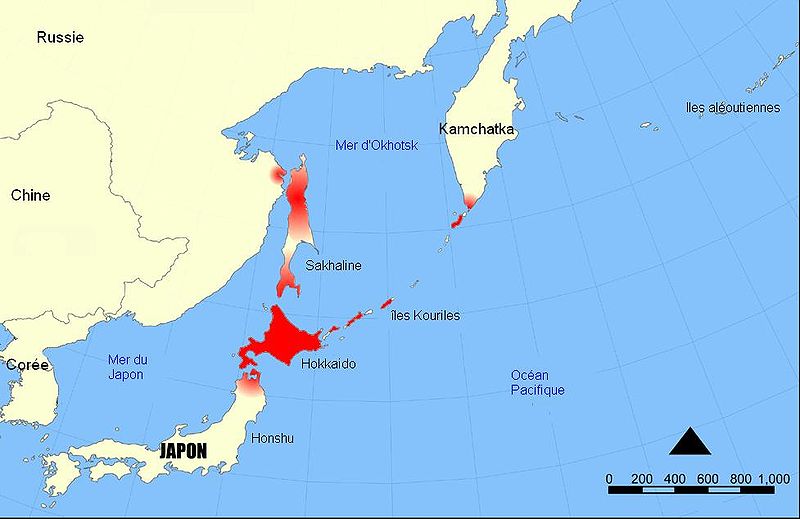 Unknown Sides of Japan: The Ainu Saga
Unknown Sides of Japan: The Ainu Saga 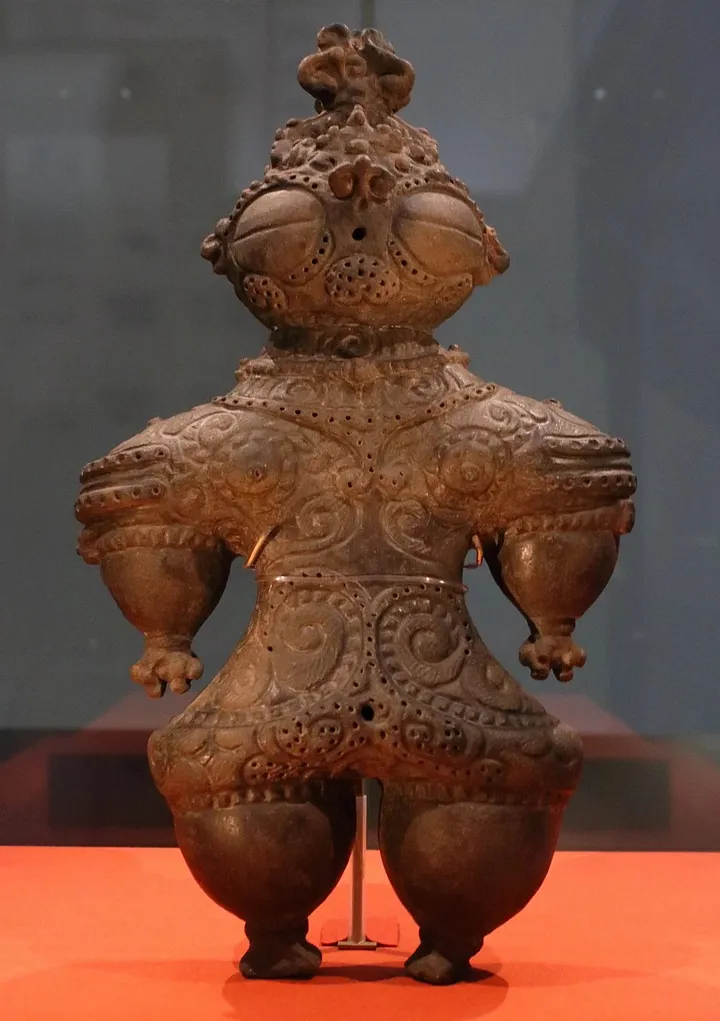 The Origins of the Ainu: Secrets from Excavations and Chronicles
The Origins of the Ainu: Secrets from Excavations and Chronicles The Ainu Language and Its Potential Influence on Japanese
The Ainu Language and Its Potential Influence on Japanese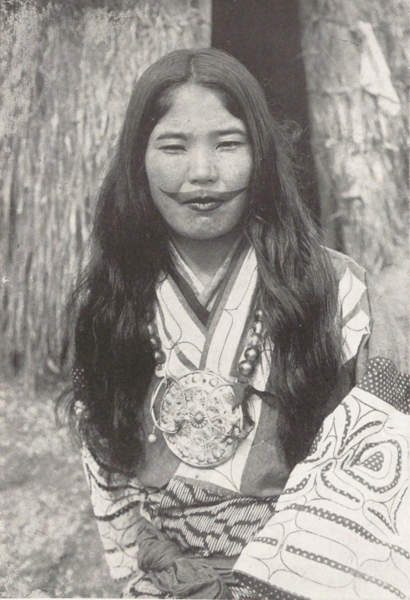 Anime
Anime 
